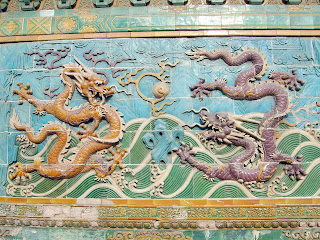We'll talk more at length about Bamiyan in a few weeks - but in the meantime, here's the UNESCO World Heritage Tour site that contains several 360º views of the Bamiyan valley. The now empty enormous openings in the rock once contained huge statues of Buddha. They were destroyed by the Taliban in 2001. However, they had been riddled with bullets and hacked away at for some time before the Taliban decided to blow them up.
Here's a very dated and somewhat goofy travelogue from a 1970s television show that gives a very good indication of scope and size. One detail from this video I found fascinating was that rope was used to create the appearance of folds on the drapery of the Buddhas:

Here's a very dated and somewhat goofy travelogue from a 1970s television show that gives a very good indication of scope and size. One detail from this video I found fascinating was that rope was used to create the appearance of folds on the drapery of the Buddhas:







